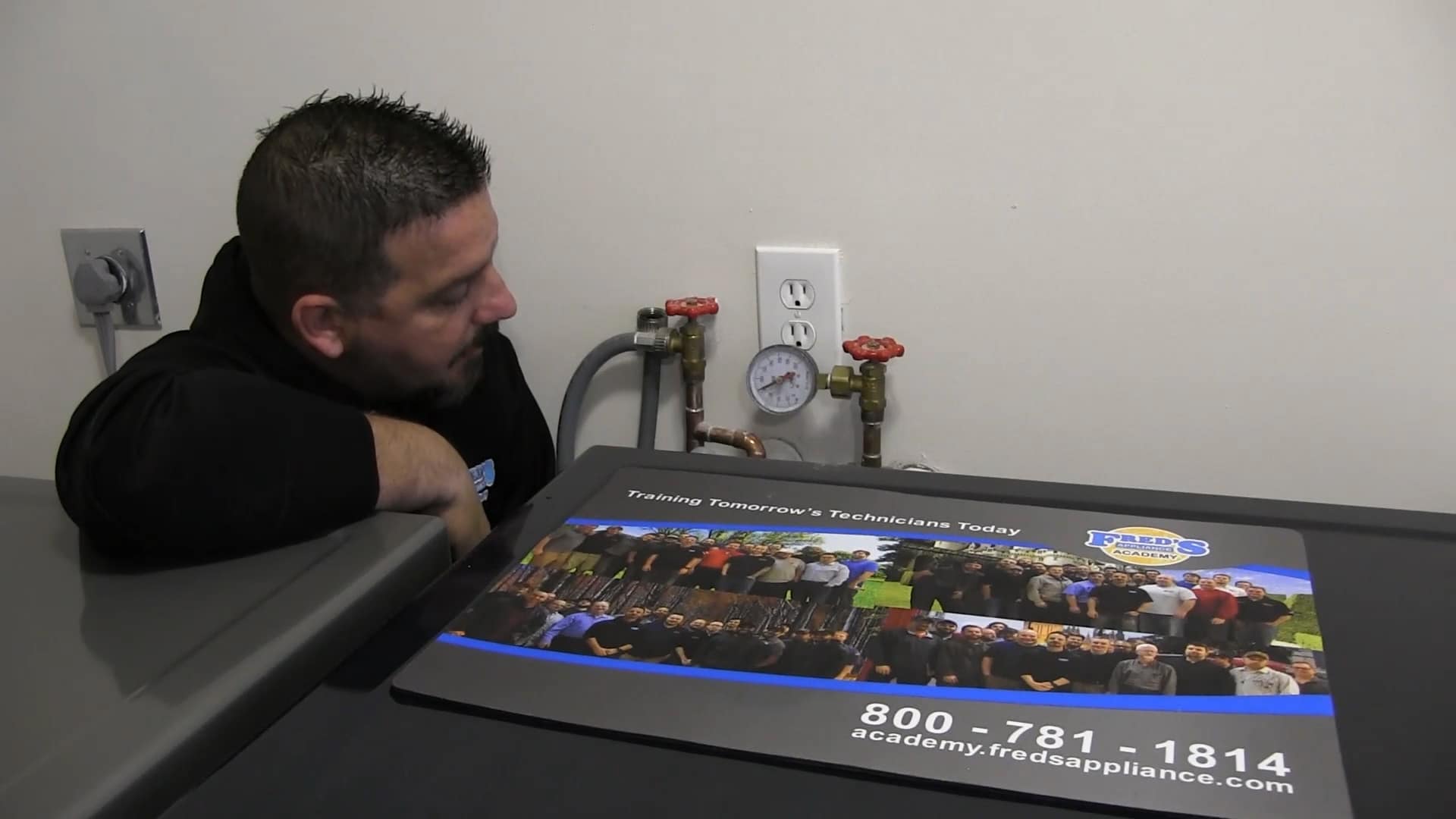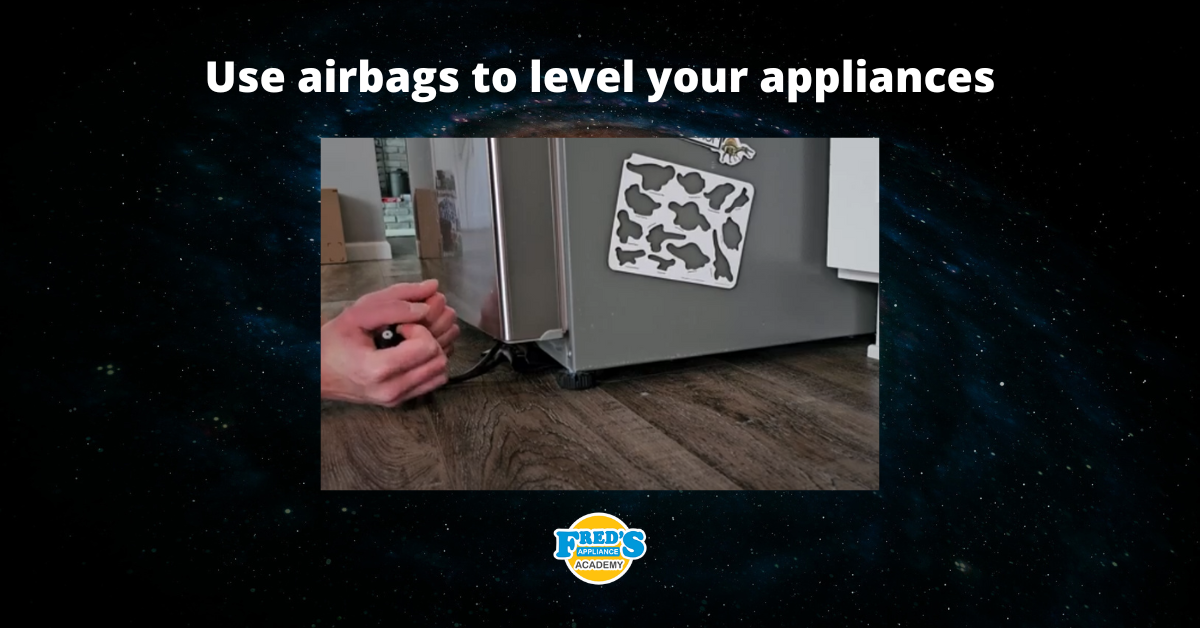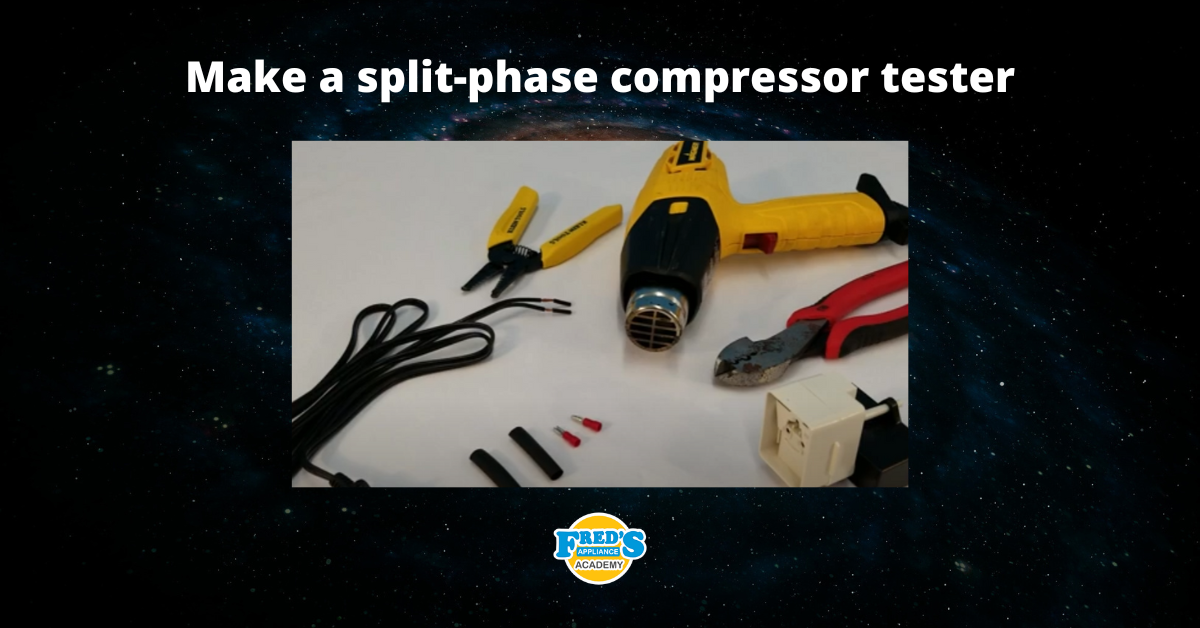
Is your washer taking too long to fill? Are you finding water in front of your washer? How about your refrigerator? Do you have hollow ice cubes or does it seem like your ice maker’s overfilling with water? Have you found standing water in the tub or you’re a dishwasher? If you’ve answered yes to any of those questions, you may be subject to improper water pressure in your home.
Hi Tim with Fred’s Appliance Academy. In this video, I’m going to show you how to check the water pressure in your home using this pressure gauge. Now the water pressure is very important to have and the ideal pressure to have in a home is 40 to 60 PSI. Now if you’re in the city or if you’re in a rural area, it’s going to be a little bit different, higher in a city, lower in a rural area where you’re on a well.
With this gauge, it’s going to tell us whether or not we are within our range. So our valves under low water pressure, they can cause seeping and we’ll actually have like in your dishwasher you’ll find standing water or even in your washer. If we have too high of water pressure when your washer’s filling, it could be overfilling the dispenser and causing leaking on the floor, which can be a very intermittent issue and not knowing where it happens in that cycle. It can be very disturbing if you go to get ice cubes and you find that they’re hollow or your ice dispenser won’t dispense because they’re all clumped together due to overfilling of high water pressure.
We’re going to get set up behind a washer and I’m going to show you how to check the water pressure properly in a home with a couple of quick easy steps using this pressure gauge. So let me get set up and we’ll be right back.
All right, welcome back. We are here behind the washer. I’ve got my cold water disconnected from the cold water side here and my pressure gauge hooked up. Although this is probably not the most ideal place to check the water pressure because of the electrical outlet here. I do have the washer unplugged, but this is my only option. You’d ideally want to go to an outside water spigot or a stationary tub, and of course always with the customer’s permission, letting the customer know in what you’re doing and why you’re doing what.
You also need to let them know that you need to start a secondary water source, meaning you’re turning on another source, which would be the cold water to release the initial backpressure out of the line. So we get an accurate reading up here. So what I’m going to do is I do have a stationary tub next to me, but it does not allow me to hook my gauge up there. The gauge, you could actually make several different adapters for your cold water line in your refrigerator or to the water supply for your dishwasher. You’ll just have to make those adapters for the gauge as you go. So what I’m going to do is I’m going to go ahead and turn on my secondary source. I’m going to come back here and turn this source on and see what our water pressure is.
All right, so we’re here at the stationary tub and I’m going to go ahead and I’m going to turn my cold water source on, and we’re just going to turn it on high right there. High or medium. I wouldn’t say low because we want to make sure the pressure gets out and so we can go back and check the pressure at our washer. So we’re going to let this run and keep this running while we’re checking the pressure at the washer.
All right, so we’ve got our secondary source running over at the stationary tub over there. What that’s doing is that’s taking the initial pressure out of the cold lines, and what I can do now is accurately get a reading here at our washer. So I’m going to open up this valve here and we’re going to see what we get.
Okay. We have our water valve open and they’re showing that we’ve got 80 PSI. A little bit on the high side, but not too concerning. Manufacturing books do say that they can see up to 120 PSI. That’s a little too much. That’s where you really start to worry about valves cracking or hoses starting in a burst. If there was anything higher than this, I would recommend to a customer to get a licensed plumber in so they can put an inline regulator in their water so they can control that pressure and turn it down a little.
What will happen is with high pressure on these washers, the dispensers are getting a little bit smaller and they’re located, they’re just… You’re not putting detergent in the bottom, they’re located on the corners or there’s a dispenser drawer where they could overfill. If they overfill then it leaks onto the floor and it generates an unnecessary service call, which is not an issue with the unit, but an issue with the home. Some warranty companies will not pay for that.
So just these quick, easy, simple steps. Your average Joe do everything, can come out and check pressure and do it at your own home. Safely do it. But check your water pressure. If you’re seeing any of the signs and symptoms that we covered earlier in the video, hollow cubes, standing water in your dishwasher or washer or leaking on the floor from your washer, you definitely want to contact a plumber, or if you believe it is with an appliance, you want to contact your local appliance repair shop.
I hope you guys enjoyed this video. Please, again, like I always ask, please like and subscribe to the page. You can see in the detailed comments where would you get this pressure gauge at and take a look for more videos on their way. I appreciate it. Thank you for all the support and we’ll see you guys later.

How to test a gas range ignitor

Congrats to our graduating March 2024 class

How to test a 120 volt receptacle

Congrats to our graduating February 2024 class

Why Is Your Dishwasher Soap Not Dissolving? (5 Easy Fixes)

Refrigerator Dripping Water Inside? 5 Quick Fixes

Appliance Industry 2023 Q4 Results

Congrats to our graduating January 2024 class

Clever ways to use airbags to level your appliances



